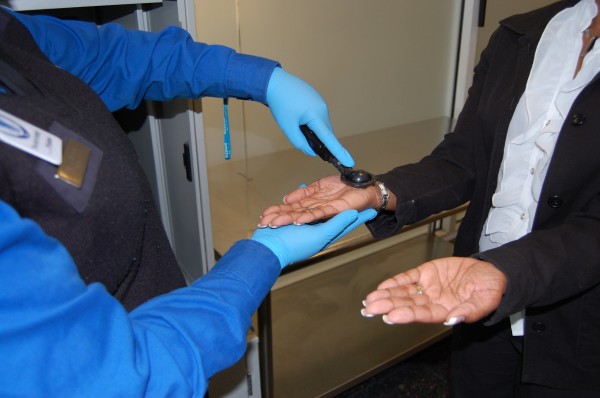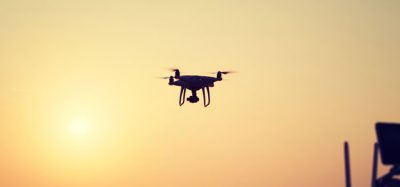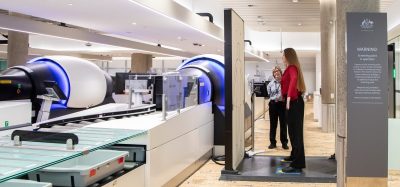A layered approach to security
Posted: 9 June 2010 | Lee Kair, Assistant Administrator for Security Operations, TSA | No comments yet
On December 25, 2009, Umar Faruk Abdulmutallab, a Nigerian citizen, allegedly attempted to detonate an improvised explosive device he smuggled on board Northwest Flight 253. The events of Christmas Day serve as a powerful reminder of the extremes to which terrorists will go to circumvent the enhanced security measures put in place since September 11, 2001. It also highlights that our adversary is adaptive and will engineer around static defenses. To stay ahead of this evolving threat landscape, TSA employs a layered approach to securing the Nation’s transportation systems. While our security checkpoints in airports are the most readily recognisable, we have many other critical layers of security in place to mitigate threats, including intelligence analysis, behaviour detection officers, canine teams, as well as other layers that may be visible and invisible to the public. Each layer alone is capable of stopping a terrorist attack but, in combination, their security value is multiplied, creating a strong, formidable system. A terrorist who has to overcome multiple security layers in order to carry out an attack is more likely to be pre-empted, deterred, or thwarted during – or even before – the attempt.
On December 25, 2009, Umar Faruk Abdulmutallab, a Nigerian citizen, allegedly attempted to detonate an improvised explosive device he smuggled on board Northwest Flight 253. The events of Christmas Day serve as a powerful reminder of the extremes to which terrorists will go to circumvent the enhanced security measures put in place since September 11, 2001. It also highlights that our adversary is adaptive and will engineer around static defenses. To stay ahead of this evolving threat landscape, TSA employs a layered approach to securing the Nation’s transportation systems. While our security checkpoints in airports are the most readily recognisable, we have many other critical layers of security in place to mitigate threats, including intelligence analysis, behaviour detection officers, canine teams, as well as other layers that may be visible and invisible to the public. Each layer alone is capable of stopping a terrorist attack but, in combination, their security value is multiplied, creating a strong, formidable system. A terrorist who has to overcome multiple security layers in order to carry out an attack is more likely to be pre-empted, deterred, or thwarted during – or even before – the attempt.
Critical technologies
While TSA has a presence through the airport environment, the travelling public knows us best for the work we do at the checkpoint. Some passengers may have already noticed recent changes at the checkpoint. What they may not recognise is that TSA is using new, cutting-edge technologies. If a passenger goes through the checkpoint process, here are some of the things they may encounter:
Explosives Trace Detection
TSA is in the process of revamping this ‘workhorse’ of the checkpoint. Explosives trace detection technology is used to screen passenger’s items and hands, to determine if an individual has come in contact with even minute amounts of explosive material. The new technology – currently being deployed – detects a wider range of explosive materials and their components. TSA is also using this flexible technology in new ways and in new locations in the airport environment beyond the security checkpoint, such as departure gates.
Join us live: Shaping the Next Generation of Hold Baggage and Air Cargo Screening
Join us live for an insightful webinar on 11th December at 14:00 GMT, in collaboration with Smiths Detection, as we explore the strategic balance of operational efficiency, regulatory compliance, and sustainability in high-volume security environments.
This session offers a focused look into future-proofing your security strategy.
Key learning points
- Cost Reduction: Strategies to minimize bag travel time while simultaneously reducing operational costs.
- Regulatory Roadmap: Insights into the next wave of regulatory changes and their impact on future investment decisions.
- Sustainable Systems: Practical approaches to building sustainability into security systems and lowering the total cost of ownership (TCO).
- Scalable Solutions: Real-world examples of scalable systems supporting current airport growth and preparing for tomorrow.
Register now for expert insights, case studies, and actionable strategies on operational efficiency!
Wireless communications
TSA deployed radio equipment at checkpoints to not only reduce noise, but also to allow our officers to wirelessly communicate and share information about anomalies they encounter during screening. Officers around the country are currently making use of this effective security support tool.
Advanced Imaging Technology
Advanced Imaging Technology is one part of a larger strategy started several years ago to transform aviation security. Today, TSA is deploying millimetre wave and backscatter technologies to airports nationwide. These technologies allow officers to detect metallic and non-metallic threats concealed under layers of clothing without physical contact, to protect against evolving threats like the one highlighted on 12/25. This optional technology is safe and TSA has implemented strict privacy protections. TSA plans to deploy a total of 450 units this year alone.
Advanced Technology X-Ray
TSA has deployed hundreds of these sophisticated screening devices to airports nationwide to screen carry-on baggage. This equipment significantly enhances our threat-detection capabilities. These tech – n ologies are upgradeable, so as threats evolve, so too will these units.
Liquid Screening Technology To enhance our liquid detection capabilities, TSA is deploying new bottled liquid screening systems that use light waves to screen sealed containers for a wide range of explosive liquids. While this type of technology is currently at airports around the country, to distinguish between harmless and harmful liquids, these new units have a greater threat library and can detect an even wider range of explosive materials. TSA utilises this tech – nology primarily to screen medically necessary liquids in quantities larger than three ounces.
The people
Before TSA was established, the screening responsibility was conducted by contracted companies. Since assuming the responsibility, TSA has instituted many changes. In the early years, TSA was focused on prohibited items and establishing our operating procedures. As both the agency and the threat have evolved, we have increased our emphasis on developing a cadre of professional security officers focused on thwarting terrorists. It is this highly trained workforce that conducts screening at security checkpoints and randomly throughout the rest of the airport, to detect suspicious behaviours and keep passengers safe on board aircraft.
Transportation Security Officers
We recognise that terrorists study our security systems to find areas to exploit. As a result, TSA encourages its employees to think beyond the operating procedure and use their expertise to detect anything out of the ordinary. TSA continually updates and enhances the training of its frontline officers, to further expand our detection capabilities. Their job is not simply to remove prohibited items from passengers, it is also to prevent terrorists from causing catastrophic damage to our transportation infrastructure.
Behaviour Detection Officers
Our workforce is also trained to look for hostile intent. We have a dedicated cadre of officers called behaviour detection officers, or BDOs, specifically trained to look for anomalous behaviour and signs of the fear of being discovered – behaviours that indicate they may be a threat to aviation and/or transportation security. They add an element of unpredictability to the security screening process that is easy for passengers to navigate but difficult for terrorists to manipulate. It serves as an important additional layer of security in the airport environment, requires no additional specialised screening equipment, can easily be deployed to other modes of transportation, and presents yet one more challenge that terrorists need to overcome if they attempt to defeat our security system.
Federal Air Marshals
Federal Air Marshals have firearms proficiency that ranks among the highest in the Federal law enforcement community. They blend in with passengers and rely on their training, including investigative techniques, criminal terrorist behaviour recognition, firearms proficiency, aircraft specific tactics, and close quarters self-defense measures to protect the flying public in the event of an incident on board an aircraft. Their undercover mission is critical to civil aviation and homeland security.
Canine teams
The explosives detection canine team is a highly effective explosives detection resource. TSA has relationships with transportation and transit agencies around the country, to train and deploy these valuable assets in the transportation environment as a highly flexible security tool. Teams undergo 10 weeks of intensive training at TSA’s Detection Canine Handler Course at Lackland Air Force Base in San Antonio, Texas, where they are trained to identify the latest threats. In addition, TSA has its own canine teams, which are trained to provide a high level of security in cargo environments.


Explosives trace detection technology is used to screen passenger’s items and hands
International partnerships
Given the increasing global interconnectivity of the transportation network, TSA recognises the value of learning new approaches from our international partners and sharing our security approaches with them, and so we cultivate strong working relationships with inter – national transportation agencies and organisations. Additionally, TSA has TSA Representatives (TSARs) and inspectors responsible for coordinating and conducting security assessments at more than 300 foreign airports and repair stations in more than 100 different countries. They work closely with our international partners to share best practices and continuously share cutting-edge explosives detection technology.
Visible Intermodal Protection and Response (VIPR) teams
VIPR teams can be deployed to enhance law enforcement presence at events that have the potential to draw large crowds in any mode of transportation. These teams have been deployed thousands of times and are com posed of a variety of assets, including Federal Air Marshals, local law enforcement officers, canine teams, transportation security officers (some trained in behaviour observation) and TSA security inspectors. The diverse capabilities of VIPR teams enable them to provide a strong, visible deterrent force in a flexible manner. VIPR teams also provide detection and response capabilities, and expand the unpredictability of security measures to detect, deter, disrupt or defeat potential terrorists and other criminal activity.
A dynamic approach
Finally, unpredictability is a hallmark of our overall process. If our enemy is studying our process to use it against us, we must make the process unpredictable, yet easy to navigate for the passenger. Since 2006, we have added layers in our checkpoint process to increase the number of rapid, unpredictable screening procedures that cannot be anticipated by those watching us. It is imperative that we do not operate in a static manner, but nimbly shift focus and resources as intelligence dictates. TSA is a relatively young agency at the age of eight, but we have seen tremendous progress. We recognise that it’s not about a single silver bullet technology that will solve our security needs. Continual updates to our technologies, processes and procedures, and a threat-focused mindset for our officers, must all be integrated to stay one step ahead of those who wish to do us harm. TSA is dedicated to this mission and uses these integrated layers of security to detect, protect, and ensure the safety of the travelling public.
About the Author
Lee Kair
Lee Kair was named TSA’s Assistant Administrator for Security Operations in October 2008. He is responsible for providing executive management of daily field operations for a workforce of approximately 48,000 employees at more than 450 airports nationwide. He is also responsible for regulatory compliance, budget and financial requirements, programme planning, partnering with security operators in other transportation modes, and the development of strategic plans for the future operational role of TSA. Prior to this position, Kair was the Federal Security Director in Orlando, Florida, the senior Department of Homeland Security official responsible for transportation security of aircraft, airports and other transportation facilities in the area. Kair has held several other positions in TSA, including Executive Director of the Office of Intra-Agency Operations and the Assistant Administrator for Acquisition, where he managed the office responsible for centralised acquisition support to all of the nation’s federalised airports and other modes of transportation. Prior to joining TSA, Kair was the Director of Strategic Sourcing and Acquisition Systems in the Office of the Chief Procurement Officer at the Department of Homeland Security. In addition, Kair has held a variety of positions in multiple agencies including the U.S. Coast Guard, U.S. Air Force, Office of the Under Secretary of Defense for Acquisition, Technology, and Logistics (Defense Procurement and Acquisition Policy) staff. He has also managed several Department of Defense service-wide and government-wide e-business systems. Kair received a Bachelor of Science in mechanical engineering from Florida State University and a Master of Science in government contract management from the Air Force Institute of Technology.
Stay Connected with International Airport Review — Subscribe for Free!
Get exclusive access to the latest airport and aviation industry insights from International Airport Review — tailored to your interests.
✅ Expert-Led Webinars – Gain insights from global aviation leaders
✅ Weekly News & Reports – Airport innovation, thought leadership, and industry trends
✅ Exclusive Industry Insights – Discover cutting-edge technologies shaping the future of air travel
✅ International Airport Summit – Join our flagship event to network with industry leaders and explore the latest advancements
Choose the updates that matter most to you.
Sign up now to stay informed, inspired, and connected — all for free!
Thank you for being part of our aviation community. Let’s keep shaping the future of airports together!


















